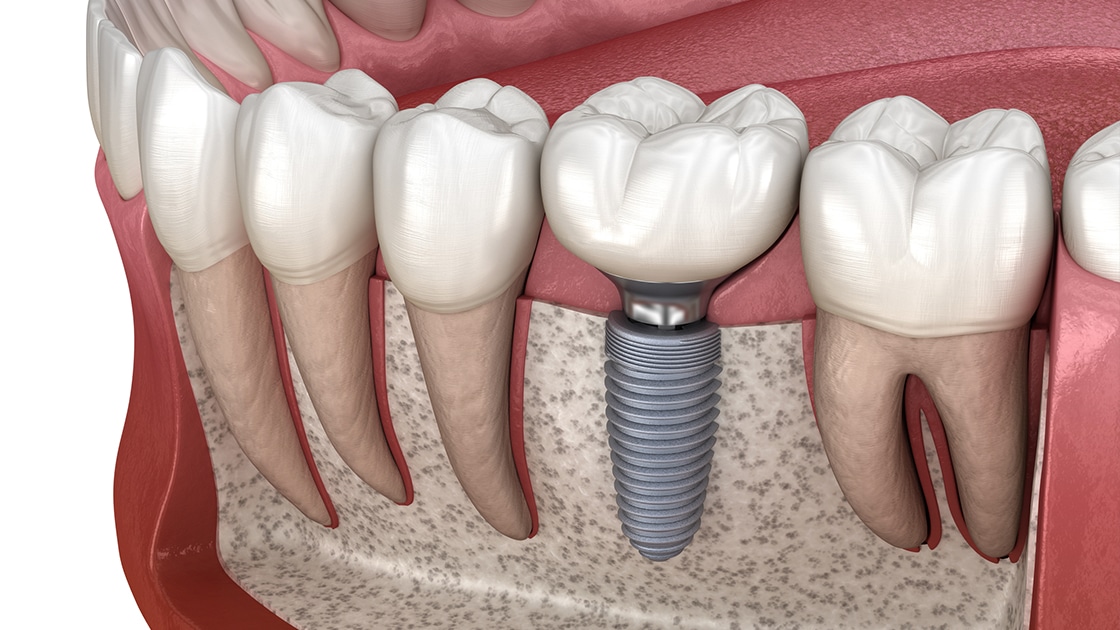Recover Functionality and Visual Appeals: Dental Implants Kent Providers
Recover Functionality and Visual Appeals: Dental Implants Kent Providers
Blog Article
Experience the most recent Advancements in Oral Implants Modern Technology
As the area of dentistry remains to progress, the innovations in dental implant technology have been absolutely nothing except remarkable. From making use of advanced products that boost resilience to the implementation of electronic imaging for precise placement, these developments are transforming the landscape of dental care. With minimally intrusive medical methods and the personalization capabilities of 3D printing, clients currently have actually access to customized solutions that were once inconceivable. The assimilation of modern technology is transforming the capability of oral implants, guaranteeing improved results and patient complete satisfaction.
Advanced Products for Enhanced Durability
In the world of oral implants innovation, the assimilation of sophisticated materials has actually dramatically added to boosting durability and longevity of these critical oral prosthetics. The use of materials such as titanium alloys, zirconia, and ceramic compounds has changed the area by using raised strength, resistance, and biocompatibility to rust.
Titanium alloys are commonly utilized in dental implants due to their extraordinary strength-to-weight proportion, rust resistance, and compatibility with the human body. These alloys make sure the stability and long life of the implant by standing up to the pressures applied throughout chewing and talking, providing a reliable option for individuals looking for long lasting tooth substitutes.
Zirconia, a kind of ceramic material, has actually acquired appeal for its biocompatibility and all-natural tooth-like appearance. Its high strength and resistance to wear make it an appropriate selection for dental crowns and bridges, enhancing the general visual appeals and functionality of the dental implant.

Digital Imaging for Specific Positioning
The evolution of dental implants technology has actually even more advanced with the assimilation of electronic imaging methods, making certain precise placement of these prosthetics for ideal useful and aesthetic results. Digital imaging plays an important role in the preparation and placement of dental implants by giving comprehensive 3D pictures of the person's jawbone framework. This modern technology permits dentists to evaluate bone density, locate essential frameworks, and intend the exact position and angle for dental implant placement with unmatched precision.
By using electronic imaging, dental practitioners can develop digital medical guides that work as a roadmap during the implant positioning treatment. These overviews are customized for every patient, taking into consideration their unique makeup and the desired result. This level of precision not just enhances the success price of oral implant procedures but additionally minimizes the danger of complications.
Additionally, electronic imaging allows dentists to imagine the final prosthetic remediation before the real placement of implants, permitting thorough planning and making certain that the outcome fulfills the patient's aesthetic assumptions. Generally, the assimilation of digital imaging innovation has transformed the field of oral implants, offering people a more foreseeable, effective, and patient-specific treatment method.

Minimally Invasive Surgical Methods


Developments in medical strategies have actually caused the development of minimally intrusive strategies in the field of dental implantology. These techniques intend to decrease trauma to the person, reduce healing times, and boost overall therapy end results. Minimally intrusive surgical procedures involve smaller sized cuts, specialized instruments, and advanced imaging modern technologies to precisely place dental implants with very little disturbance to bordering cells.
One secret element of minimally intrusive techniques is the use of led surgery, where 3D imaging and computer-aided style software are employed to prepare the dental implant positioning with fantastic accuracy. This enables for a much more predictable end result and can frequently get rid of the need for comprehensive flap surgical procedure.
Additionally, innovations in materials and dental implant style have additionally added to the success of minimally intrusive techniques. Implants with improved surface homes promote faster osseointegration, decreasing the healing time called for before the prosthetic remediation can be put.
3D Printing for Personalized Solutions
Making use of 3D printing modern technology in dental implantology enables the production of extremely customized solutions customized to individual patient requirements and anatomical variants. This sophisticated innovation makes it possible for oral specialists to develop and fabricate oral implants with phenomenal accuracy and accuracy. By making use of electronic imaging methods, such as see here cone beam of light calculated tomography (CBCT), thorough 3D designs of the patient's oral tooth cavity can be generated to direct the implant preparing process.
One of the crucial advantages of 3D printing in dental implantology is the ability to produce patient-specific implants that flawlessly fit the unique makeup of each individual. This personalized approach helps enhance the overall success and durability of the implant by guaranteeing optimum fit and positioning. Additionally, 3D printing permits the production of complex geometries and complex structures that would be impossible or challenging to achieve utilizing standard manufacturing techniques.
Moreover, 3D printing innovation allows dental experts to simplify the implantation procedure, minimizing surgical treatment time and enhancing overall patient experience. With its capacity to create personalized remedies promptly and successfully, 3D printing is revolutionizing the area of dental implantology, offering individuals innovative therapy choices and improved results.
Integrated Modern Technology for Improved Performance
Applying cutting-edge innovation in dental implantology boosts functionality and precision, elevating the standard of take care of people undertaking dental implant treatments. Integrated innovation plays an important duty in boosting the overall success and toughness of dental implants. One key innovation is the combination of digital scanning and imaging modern technologies, such see as cone-beam computed tomography (CBCT) and intraoral scanners. These devices permit for thorough 3D imaging of the client's dental frameworks, facilitating exact treatment planning and dental implant positioning.
Furthermore, the combination of computer-aided design and computer-aided manufacturing (CAD/CAM) innovation allows the creation of customized implant reconstructions with phenomenal precision. CAD/CAM systems utilize digital impacts to design prosthetics that perfectly fit the person's distinct makeup, making sure ideal convenience and functionality. In addition, using robotic-assisted surgical procedure in implant positioning enhances accuracy and decreases the danger of human error.
Conclusion
Finally, the most up to date developments in dental implants modern technology deal enhanced toughness via sophisticated materials, precise placement with digital imaging, minimally intrusive medical methods, personalized remedies with 3D printing, and improved capability with integrated innovation - Dental implants Kent. These innovations in oral implants technology are transforming the field and providing clients with even more efficient and reliable therapy choices for recovering their smiles and dental health
The assimilation of modern technology is changing the functionality of dental implants, promising boosted end results and individual satisfaction.
The evolution of oral implants innovation has even more progressed with the combination of electronic imaging strategies, making certain specific positioning of these prosthetics for optimum useful and visual results. Minimally intrusive surgical treatments entail smaller sized incisions, specialized instruments, and advanced imaging modern technologies to specifically place oral implants with very little disruption to bordering cells.
Executing innovative innovation in oral implantology improves performance and precision, raising the requirement of care for best site clients undertaking dental implant procedures. Dental implants Kent. Integrated technology plays an essential role in boosting the total success and durability of dental implants
Report this page